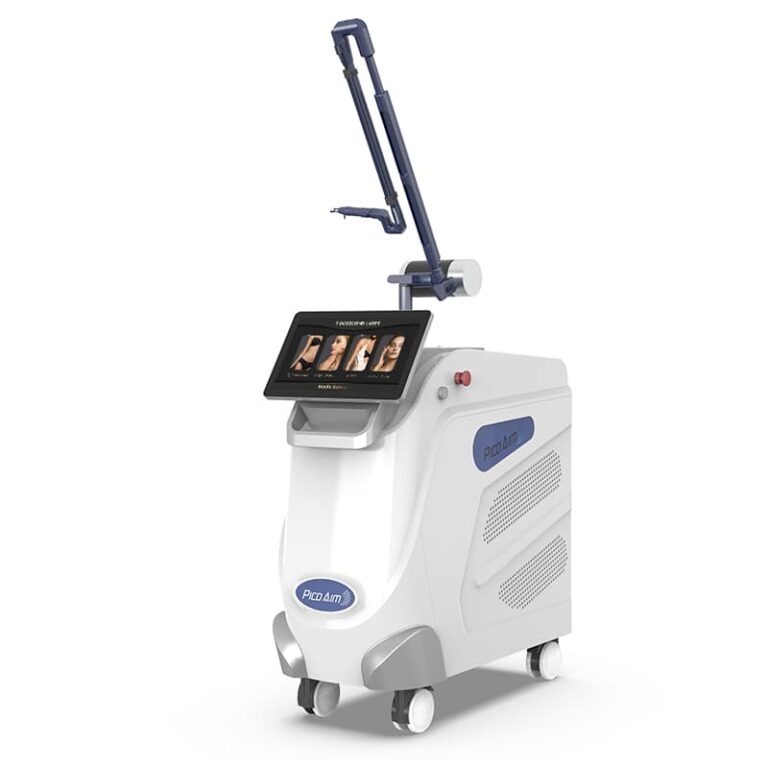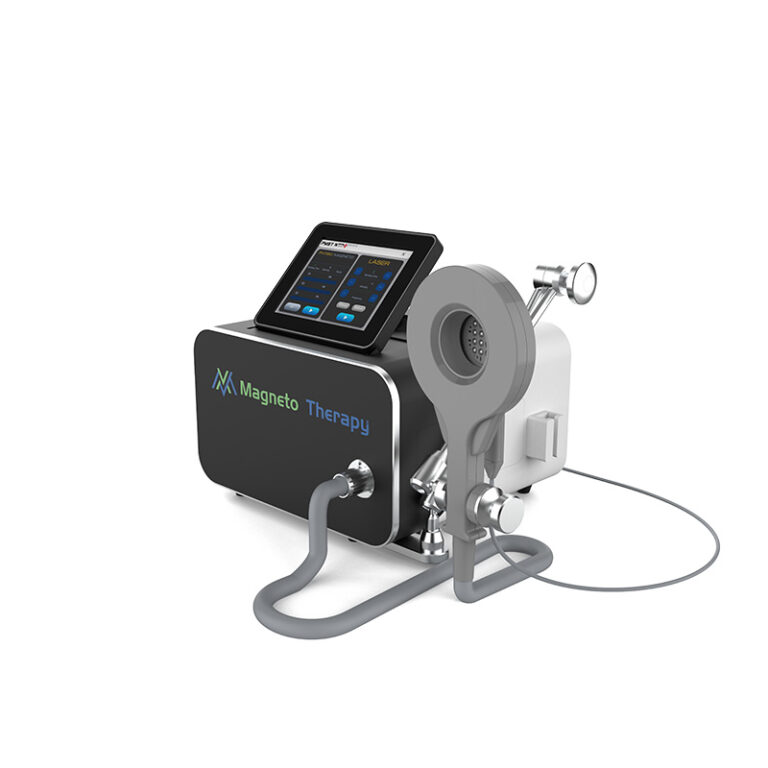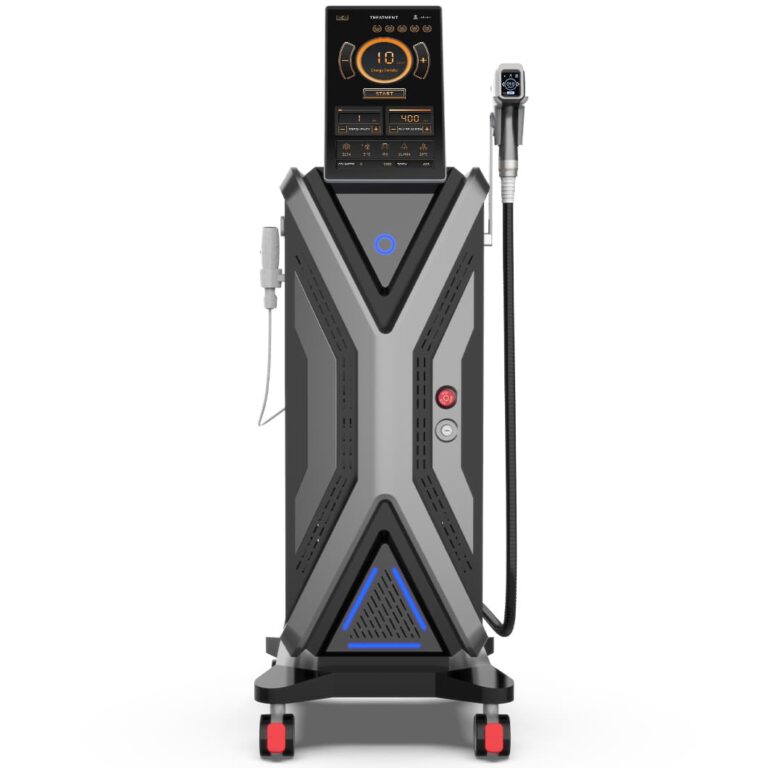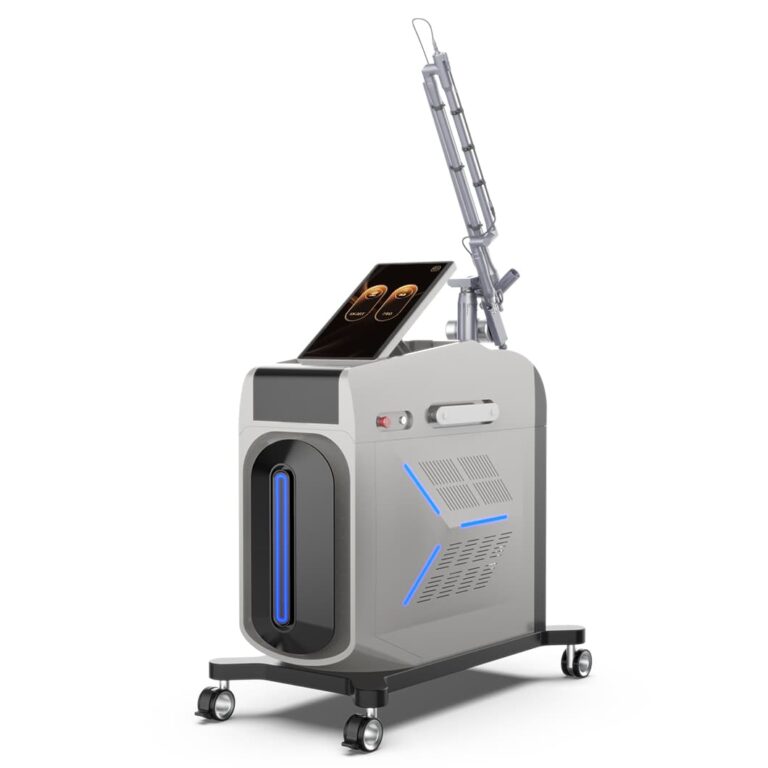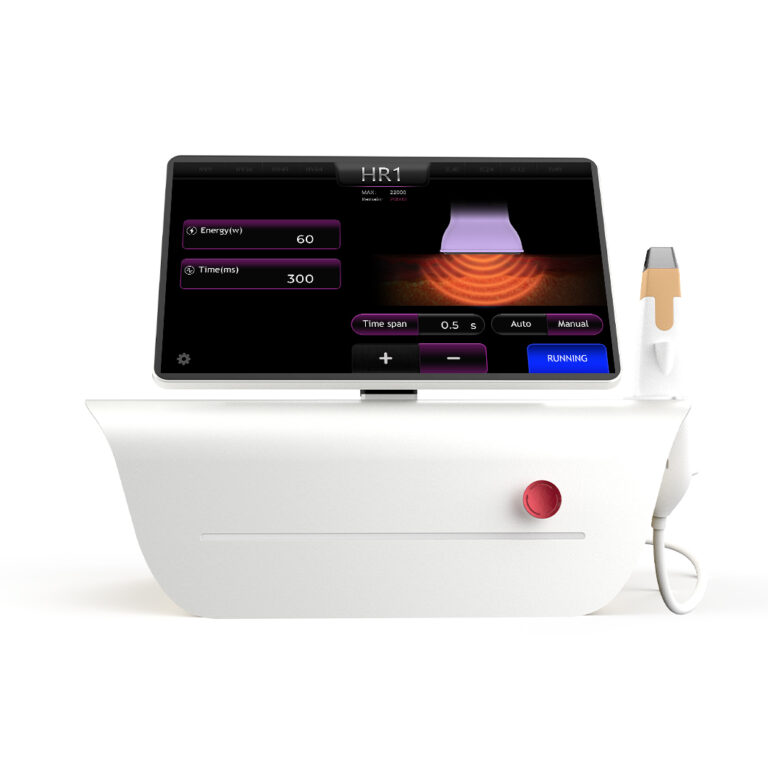Tattoo removal has gotten so much better lately. New lasers make it easier to ditch ink you don’t want anymore. The two big types are nanosecond and picosecond lasers. Both blast light pulses to break up tattoo ink. But their speed changes everything—how well they work, how safe they are, and the results you see. Here’s a look at how they stack up and why picosecond lasers are usually the better pick.
How Laser Tattoo Removal Works
Breaking Up Tattoo Ink
Lasers shoot strong beams of light into your skin to hit the tattoo ink. The light heats and splits the ink into tiny bits. Your body’s immune system then sweeps those bits away. How well this works depends on the laser’s wavelength, power, and how fast it pulses.
Why Pulse Speed Matters
Pulse speed is how long each laser burst lasts. Quick pulses hit harder and faster. They break ink apart without hurting the skin around it. That’s why the speed of the pulse is super important for removing tattoos.
What Are Nanosecond Lasers?
How They Do the Job
Nanosecond lasers send out incredibly short bursts of light, each lasting just billionths of a second. These bursts heat up the tattoo ink underneath your skin. When they hit the ink, they make it break apart into much smaller bits. While this approach can work for some tattoos, you’ll often need quite a few sessions to see full results. Plus, because the laser heats things up, your skin can sometimes get uncomfortably warm during treatment – more than most people would prefer.
What They’re Good For and Where They Fall Short
Nanosecond lasers have been around forever. They’re solid for dark inks like black or blue. But their longer pulses make more heat. That can lead to scars or weird skin color changes. They’re also not great for lighter or colorful tattoos.
What Are Picosecond Lasers?
How They Zap Ink
Picosecond lasers are crazy fast. They fire pulses in trillionths of a second. This super-quick burst smashes ink into tiny specks. Your body can clear these specks easily. The laser only hits the ink, so your skin stays safe.
Awesome Features of Picosecond Lasers
New picosecond lasers use different wavelengths, like 532nm, 755nm, 1064nm, and 1320nm. These tackle all sorts of ink colors and skin types. Our Picosecond Laser Tattoo Removal Machine has ultra-fast pulses. It’s easy to adjust and super precise. It breaks ink apart well and keeps side effects low.
Picosecond vs. Nanosecond Lasers
Pulse Speed and Power
The big difference is how fast they are. Picosecond pulses are way quicker than nanosecond ones. That means more power in less time. Picosecond lasers use sound waves, not heat, to smash ink. This is called a photoacoustic effect.
They don’t heat up your skin as much as older lasers. That’s easier on your body.
How Well They Break Up Ink
Picosecond lasers make stronger shockwaves. These shatter ink into smaller bits. Your body clears them faster. That means your tattoo fades quicker than with nanosecond lasers.
How Many Sessions You Need
Picosecond lasers usually need fewer sessions. You’ll see changes sooner. That means shorter treatment plans and better results.
Why Go with a Picosecond Tattoo Removal Machine?
Less Worry About Skin Damage
Less Heat on Your Skin
Picosecond lasers use sound waves, not heat. That cuts down on stuff like burns or swelling. They’re safer than slower lasers that lean on heat.
Fewer Scars or Color Changes
Picosecond lasers are gentler on your skin. They lower the odds of scars or funky skin color changes after treatment.
Faster Healing
You bounce back quicker with picosecond lasers. They don’t mess up nearby skin as much. You might have less redness or puffiness. That means you can do sessions closer together if you need to.
Handling Different Skin Types and Ink Colors
Tackling All Kinds of Ink
Black, Red, Green, and Blue
Picosecond lasers with multiple wavelengths can handle lots of ink colors:
- 1064nm: Perfect for black and dark blue.
- 532nm: Great for red, orange, and yellow.
- 755nm: Works on green and blue.
- 1320nm: Good for deeper pigment issues or carbon peels.
Safe for All Skin Tones
Picosecond lasers work for every skin type. They don’t make much heat. You can tweak settings to match your skin. This keeps risks low and results awesome.
Picosecond laser tattoo removal machines beat nanosecond ones. They’re faster, safer, and work for all skin types. Try Perfectlaser Picosecond Laser Tattoo Removal Machine to get rid of unwanted tattoos. Whether you’re sprucing up your clinic or want ink gone, our high-tech device delivers great results. Give us a shout today to learn more about how it can help you safely and quickly.
FAQ
Q: How many sessions do people usually need for tattoo removal with picosecond lasers?
A: You’ll typically require 3 to 5 sessions. It depends on your tattoo. Things like its size, color, and how old it is matter. Your provider will look at your tattoo. Then they’ll give you a plan that fits you.
Q: Does tattoo removal hurt using picosecond or nanosecond lasers?
A: It can feel like a rubber band snapping on your skin. Picosecond lasers are often less uncomfortable. That’s because they work faster. They also create less heat. Numbing cream or cooling can help. These make the feeling easier to handle.
Q: Can I get rid of only part of a tattoo with these lasers?
A: Yes, absolutely. Both picosecond and nanosecond lasers can focus on specific areas. Picosecond lasers are more precise. This makes them better for removing just the bits you want. They’re less likely to disturb the ink nearby.
Q: Do nanosecond lasers work as well as picosecond lasers for tattoo removal?
A: Nanosecond lasers can do the job. But they’re slower. You might need more sessions. This is especially true for colorful tattoos or stubborn ones. Picosecond lasers are more efficient. Their super-fast pulses break down ink quicker.




